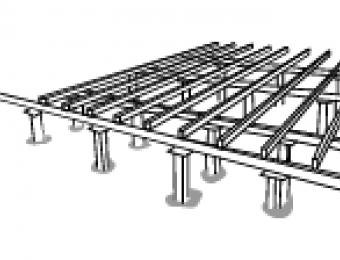
What are screw piers?
Screw piers (also known as screw piles) are a great alternative to using traditional stumps. The piers are long steel tubes with a screw head at one end which is screwed into the ground. The other end - the part that sticks up - is capped with a circular platform on which the house frame rests. Screw piers can be installed quickly and efficiently, as they don’t require pre-dug holes or concreting in, meaning you can set the frame up as soon as the piers have been capped. This can provide a significant time and cost advantage on installation, and also means the piers are easier to adjust once they're in place.
What are screw piers made of?
High tensile steel is the material of choice for screw piers. Not only do they have to be exceedingly strong to hold up the house, but they also need to be very strong to prevent them from buckling or twisting when they're being installed.
Are there variations?
The basic design of screw piers is more or less the same across the building industry, but variations on the styles of the piers do exist between different manufacturers. As a rule they're all installed in a similar fashion, and serve the same basic purpose.
How are screw piers installed?
Installation is extremely fast, with most standard-sized jobs able to be finished in around four or five hours. The site is first marked according to where each post should be. The pier is then drilled into the ground using a hydraulic drive motor connected to an excavator. The screw head on the pier is a displacement screw, and much like a wood screw in a plank it disturbs very little soil. This leaves the surrounding earth pressed firmly against the pier holding it stable.
It is important to note that the screw head cannot end up in bedrock, but it is suitable for just about every other soil type. Once in, the piers are then measured using a laser to keep them level, cut to size and finished with a small circular platform cap which is bolted to the pier. The frame can then be lowered on, allowing it to rest on top where it can be bolted onto the piers. If required, a slab can be laid across the ground at the foot of the piers to give them added stability and moisture protection.
Where are screw piers used?
Because of the versatility of soil types these can be used in, the ease and speed of installation and consequent stability, screw piers can be used just about anywhere an excavator will fit. They are especially popular with prefab steel frame houses due to the ease of construction and limited clean up required.
|
Advantages
|
Disadvantages
|



